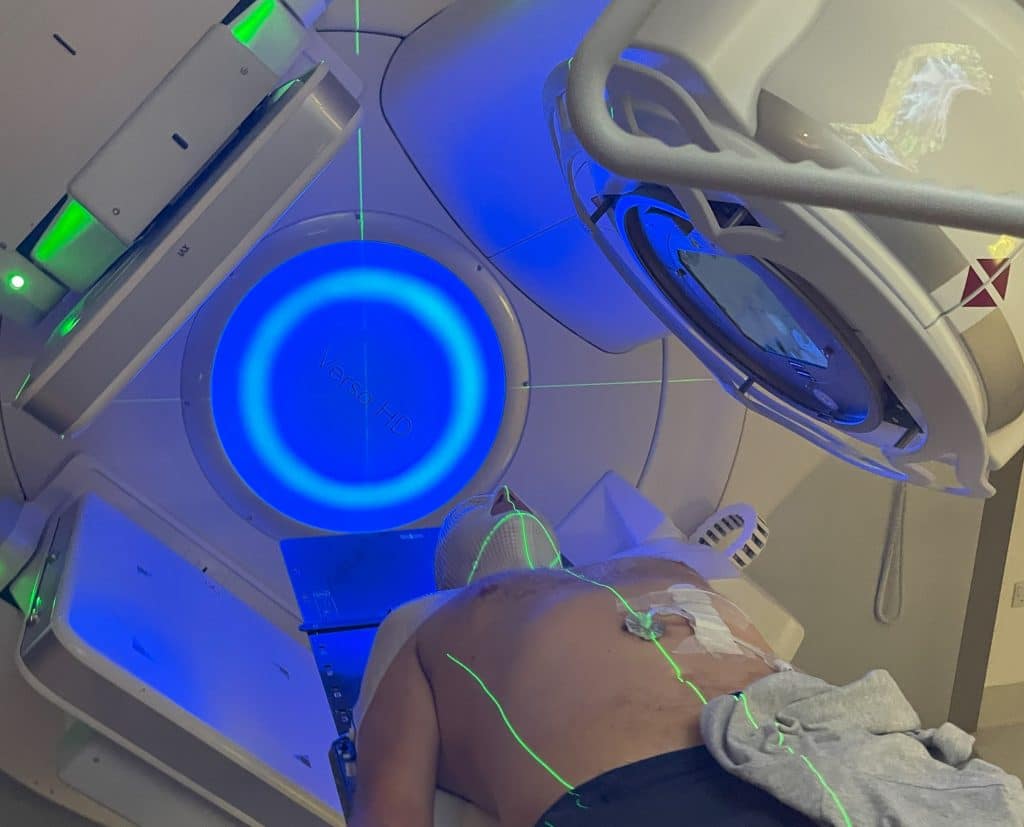Proton Beam Therapy vs Photon Beam Therapy
We caught up with our latest Oracle Voices member, John Powell to hear his mouth cancer treatment story. John has had a very positive experience of being treated with proton beam therapy and is the first oracle voices member who will have had this treatment.
John is a retired physicist although still active in several industrial activities. He recently developed cancer at the back of the tongue and took part in the Torpedo trial 3 years ago https://www.icr.ac.uk/our-research/centres-and-collaborations/centres-at-the-icr/clinical-trials-and-statistics-unit/our-research/clinical-trials/torpedo although he also had some chemotherapy too.
John has kindly written a short conversational guide for non-scientists to explain the difference between “proton” and “photon” beam therapies.
The difference between photon beam therapy and proton beam therapy
John says “If you are unfortunate enough to have a cancer tumour somewhere where it can’t be cut out, it needs to be killed to stop it spreading. It can be killed by firing X-rays at it (traditional radio therapy, or photon beam therapy), or by firing protons at it. Although photons and protons sound similar there are important differences between them.”
What is Photon Beam Therapy (also called X-ray radiotherapy)?
John continues “Photon therapy is a well-established technique for killing a cancer tumour by firing X-rays at it. Let’s say you have a cancer tumour at the back of your tongue, where it can’t be operated on (as I did). Specialist medics will identify where the tumour is and then aim a beam of X-rays at it from several different positions. They might, for example fire a shot from the left-hand side of your neck, then one from the front, then from the right-hand side etc. etc.”

“A shot or beam of X-rays is made up of millions of individual waves, called photons. You, and your unwanted tumour, are made up of cells. Each time the medics fire a shot, most of the millions of X-ray photons will simply pass through you. A small proportion of the X-rays will be stopped by hitting cells. If a direct hit like this happens, the X-ray photon is stopped (absorbed), and the cell is killed.”
“During each shot a few of the healthy cells and a few of the tumour cells in the path of the X-ray beam are killed, unfortunately the X-rays can’t tell the difference between healthy cells and cancer cells. This is why the medics fire lots of shots from different directions. During the course of one X-ray session, they will, for example, hit the tumour ten times, but because they fired the beam from ten different directions, the rest of your neck is only slightly damaged.”
He says “during each session only a small proportion of cells are killed, which is why we need several sessions until we can be sure the tumour is dead. It might take several hundred shots over several weeks to be sure. Unfortunately, this means that the healthy cells which were in the path of these shots were also exposed to a lot of X-rays, and some of them will have died too. The death of these healthy cells can lead to side effects, some of which might be permanent, but, because the beam was aimed from lots of directions, the healthy areas of your body get a much smaller number of X-ray hits than the (now dead) tumour.”
What is Proton Beam Therapy?
John explains “Proton beam therapy is a more recently developed technique. The process is very similar to photon beam therapy (lots of shots from different directions), but the beam is now made up of protons, not X-ray photons. Protons can be thought of as tiny little bullets, and each shot of a proton beam is made up of millions of these bullets.”

“The main difference between X-rays and protons is that most of an X-ray shot passes straight through you, doing some damage wherever is goes. This means that you get damage on the way to the tumour, inside the tumour, and on the way out of your body after the tumour.”
“Protons don’t pass through you – they start to slow down as they travel through you, and they come to a halt inside the tumour. This is good news because the healthy cells beyond the tumour are not killed. But the odd thing is that protons don’t do a lot of damage on the way to the tumour either.”
“One strange thing about these proton ‘bullets’ is that they do more damage at slow speeds than they do when they are travelling very quickly. They need time to do damage to cells, and when they are travelling very quickly (as they enter your body) they rush past before they have time to do much.”
Finally he explains “The specialist medics know where the tumour is and they know how much the proton ‘bullets’ are slowed down by passing through your skin, bone, muscle etc. So, they give the protons just enough energy to reach the far side of the tumour. The protons then travel through your skin very quickly (doing little damage) and slow down in the tumour (doing a lot of damage). So, the big difference between the two techniques from the patient’s point of view is that X-ray photons kill a lot more healthy cells than protons. This means that proton beam therapy gives the patient fewer side effects.”
Patient Stories

Suzie Cooke – a lesson in not taking ‘no’ for an answer

Nigel Lloyd-Jones – being told “you have cancer” is life changing

Belinda Gilfoyle – a slow recovery and learning to stay positive

Salivary Ductal Adenocarcinoma news “hit me like a train”









